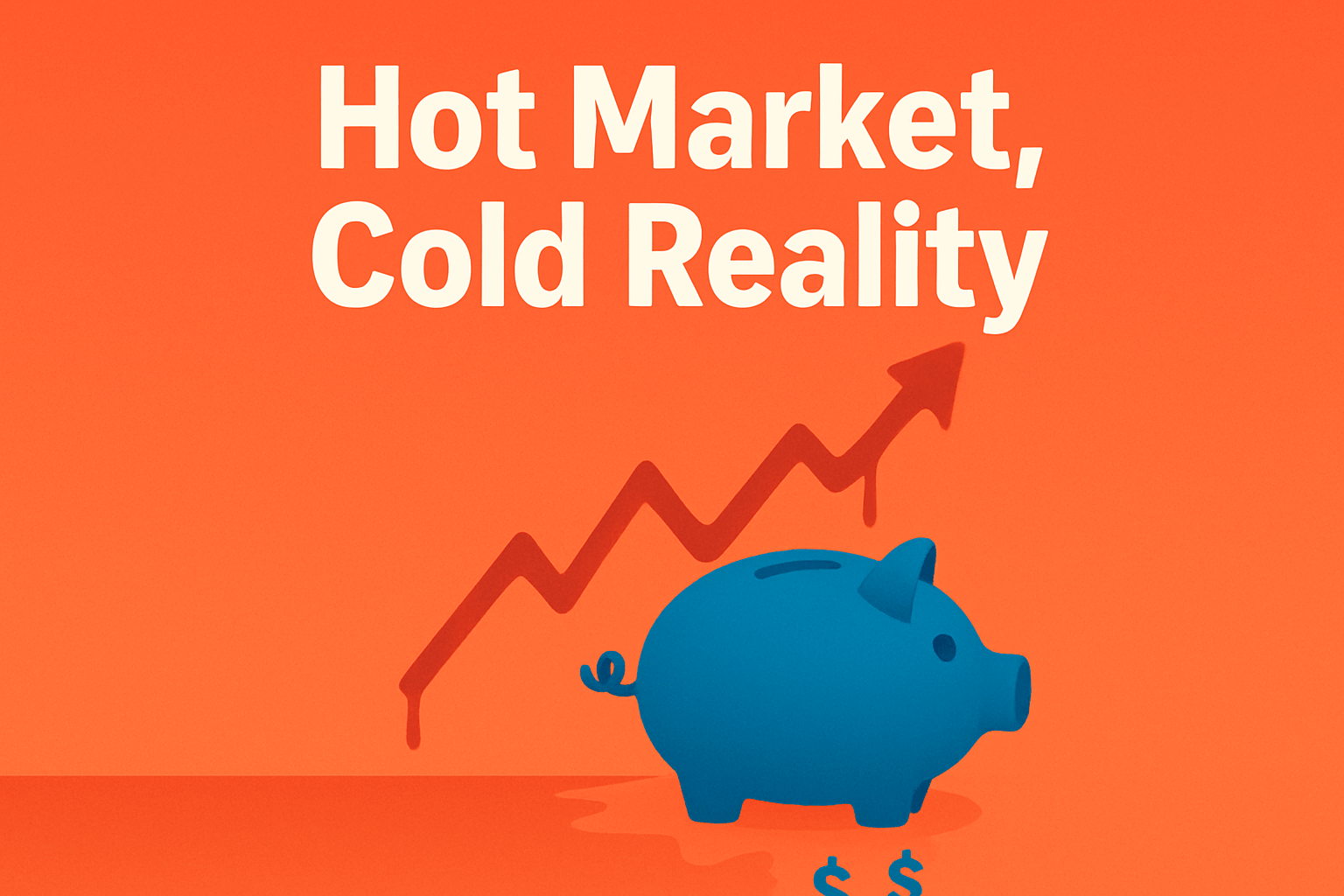The stock market may be soaring, but retirement security isn’t guaranteed. Learn why high returns breed risk, how much you really need to save, and the truth about retirement spending.
The S&P 500 is up 11.5% so far this year. Over the past decade, the S&P 500 has returned an average of 15% annually, far in excess of its long-term annualized return of 10.3%.”
“The obvious worry is that stocks have become extraordinarily expensive. The more subtle concern is that a booming stock market breeds complacency.”
“Huge returns make a comfy retirement for everyone seem within reach, without effort or sacrifice. And that’s a dangerous delusion.”
Saving Is Your Responsibility
“With indexes at record highs, it’s the perfect time to remind yourself that saving for your retirement isn’t the stock market’s job. It’s yours.”
“Whether you have decades of working ahead of you, you’re nearing retirement or you’re already retired, you’re probably going to need more money to sustain you in your post-working years than you think.”
“That will be especially true if, as history suggests, high current stock prices lead to lower future returns. What if performance dwindles? Retirement savers who took high returns for granted and didn’t save enough may face a severe shortfall.”
Also Read: Rethinking Scarcity in Modern Economics
The Spending Reality in Retirement
“It’s widely believed that people spend less in retirement than when they were working. One popular rule of thumb is that you will have to cover only 70% to 80% of your pre-retirement spending.”
“That’s nonsense, according to researchers Edward McQuarrie and William Bernstein… Several studies have shown that, on average, people spend around 93% to 97% as much in retirement as they did when they were working.”
“Those who spend less do so not because they can, but because they must—because they didn’t save enough.”
“The wealthier, on the other hand, may even spend more in retirement than they did while working.”

A Real-Life Example
Dan Foote, a retired commercial banker, explains: “I don’t commute or buy suits, but I have more time on my own to spend money. I think we spend the same [as during the working years].”
“Fortunately… because the stock market has boomed in the past decade, our net worth today is higher than it was seven or eight years ago.”
What If the Market Busts?
“In recent research analyzing returns back to 1793, McQuarrie looked at all 30-year periods lagged monthly (starting with January 1793, February 1793 and so on) through the end of 2023.”
“In 160 of those more than 2,400 three-decade periods, annualized stock returns averaged less than 3% after inflation. In 302 of the 30-year periods—an eighth of the total sample—stocks gained an average of less than 4% annually after inflation.”
“If you expect to work for 30 years and be retired for 30 years, says Bernstein, ‘you’d better save a truckload of money—and you’d better be lucky.’”
How Much You Need to Save
“If a portfolio of stocks, bonds and other assets earns a 5% annualized return after inflation, you would need to save nearly 12% of your pretax income for 30 working years to sustain a constant level of spending through a 30-year retirement.”
“At a 4% real return, you’d have to save more than 15% of your pretax income… If your portfolio earns 3% after inflation, you’ll have to save nearly 21% of what you earn for 30 years.”
“Even if you work for 40 years and retire for only 20, you’d have to save 10% of your income to sustain your spending if your portfolio generates a 3% net return.”
Retirement Spending Phases
“As many analysts—and retirees!—have pointed out, retirement tends to sort itself into three approximate phases: go-go, slow go and no go.”
“The resulting pattern of retirement spending is high in the go-go years, lower in the slow-go years and often higher in the no-go years.”
The Investor’s Three Choices
“What investors must never forget is that market returns also have three basic phases: good to great, middling and miserable. To counteract the consequences of miserable long-term returns, you have only three choices: Save more, work longer or take more risk.




